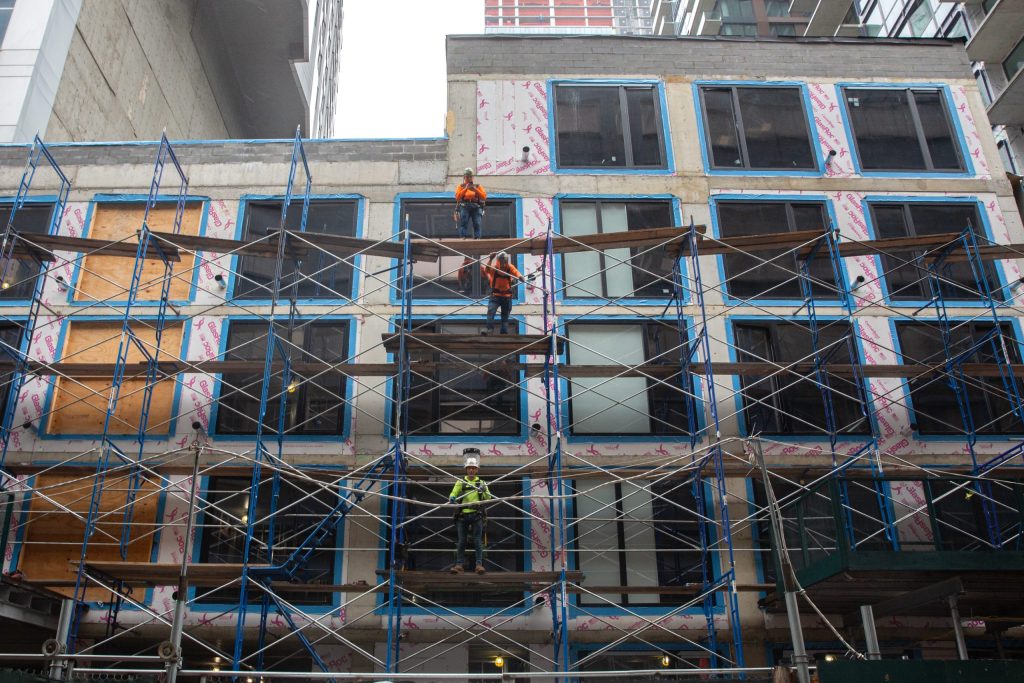From taxes to housing to infrastructure to climate change to reducing poverty, Donald Trump and Kamala Harris are at odds on the key economic issues that will affect New York.
No one knows if the winning candidate will be able to follow through on their promises. Implementing them will require action by Congress, which may wind up being controlled by the opposite political party.
In a two-part series, THE CITY is looking at the campaigns’ proposals and how they would affect New York City. The first installment focused on how each says they’ll approach taxes and fighting poverty. Today we’re looking at how they seek to shape development and infrastructure.
Hopes for New Homes
One surprise in the campaign, with enormous implications for New York City, has been the decision by Harris to propose a major federal effort to increase the construction of new homes to deal with what has become a national housing crisis. It’s the first time in decades any presidential candidate has pushed for a major federal commitment.
Democrats are also starting to embrace action to counter local zoning restrictions that limit increased density and multifamily housing, a problem former President Barack Obama called out in a speech at this summer’s Democratic National Convention. The stance provides important support for the efforts by Gov. Kathy Hochul, Mayor Eric Adams and the so-called Yes In My Backyard movement to achieve increased housing growth in New York.
Whether that matters will be clear once the City Council acts on its power to approve, modify or reject Mayor Eric Adams’ pending “City of Yes” rezoning proposal, which seeks to require every neighborhood in the city to accommodate more housing.
The Harris plan includes a $25,000 tax credit for first-time homebuyers, an increase in the low-income housing tax credit relied on by builders of affordable apartments, and a new $40 billion fund that would “empower local governments to fund local solutions to build housing and support innovative methods of construction financing.”
Harris projects her plan would lead to the construction of 3 million homes in her first term, a 50% increase over the current rate of new construction.
Trump’s drums on three major themes of his campaign when he talks about making housing more affordable. He points to his promise to deport millions of immigrants, which he claims will lower purchase prices and rents by reducing competition — which most economists say is not likely.
New York housing expert Jonathan Miller said recently it was clear the policy would be inflationary by reducing the number of construction workers, a large share of whom are immigrants.
Trump says that by taking on the Federal Reserve Board, he would force interest rates lower, although the Fed is already committed to that approach. He has also said that housing could be built on federal land, although details are scarce, and it’s irrelevant for New York City and its suburbs, where virtually no federal land is available.
Trump has long opposed zoning reforms like those envisioned in the City of Yes, claiming they would destroy suburban neighborhoods. He changed his tune in an interview with Bloomberg in which he said zoning rules did restrict new housing but left it unclear if that represented a change of position or an off-the-cuff response to a question.
Climate and Infrastructure
It is not an exaggeration to say that almost $40 billion in money for local infrastructure, climate change measures and mass transit set aside in the 2021 Infrastructure Investment and Jobs Act is at stake in the presidential election.
Donald Trump and other Republicans are eyeing those funds for other uses and could repeal the infrastructure law, halting project approvals and freezing funding. Harris is almost certain to stick by commitments made under the Biden infrastructure law — one of her predecessor’s most important achievements.
But Republicans can disrupt the commitments, because the projects will take years to complete. For example, the biggest single grant for the region is the $16 billion that Biden has committed to the new Gateway rail tunnel under the Hudson River.
While construction has recently begun, it won’t be done until 2025 — and then closing and rehabbing an existing tunnel is expected to take until 2038.
The MTA’s windfall from the infrastructure bill totals $4.5 billion.
The city has captured $2.37 billion, with about $1 billion in formula-based programs and another $1.3 billion in competitive grants. The money is targeted for electric vehicles, clean-energy schools, green ports and a QueensWay park along an abandoned rail line.
In the last two months the Adams administration has announced it has won additional money for modernizing the Brooklyn Army Terminal, a greenway on 10th avenue in Inwood and EV stations in lower-income areas of the city.
That adds up to $23 billion at risk. And the $15 billion congestion pricing was supposed to provide for the MTA capital plan is also on the table.
While Gov. Kathy Hochul has “paused” its implementation, she is under increasing pressure to allow it to go ahead because she has been unable to come up with an politically acceptable alternative that would pay the interest on bonds that would supply the money.
If she does decide to allow congestion pricing, the federal government might have to give its approval again, something a Harris administration is likely to do.
If Trump is elected, congestion pricing won’t be an option. He has said he will kill it in the first week he is in office.

